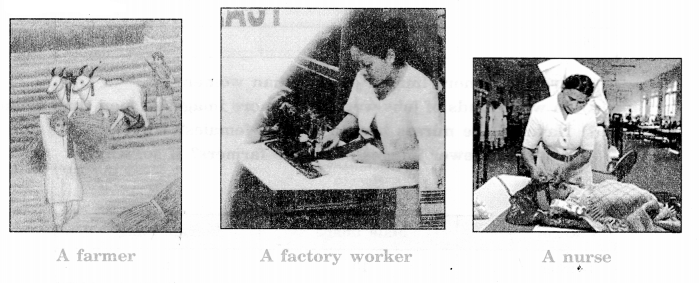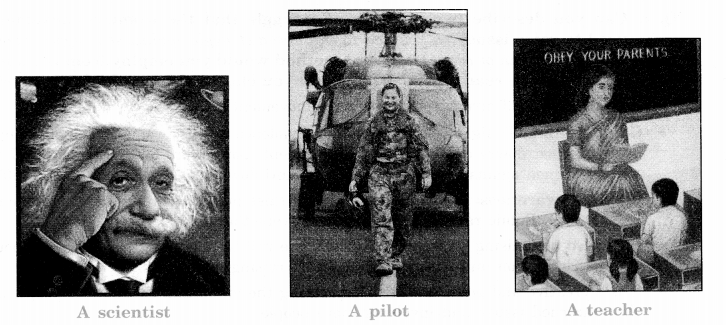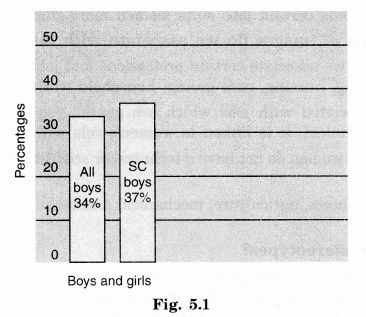GetStudySolution
Getstudysolution is an online educational platform that allows students to access quality educational services and study materials at no cost.
NCERT Solutions for class 7 Civics chapter 5 – Women Change the World
Back Exercise
1. How do you think stereotypes, about what women can or cannot do, affect women’s right to equality?
Answer
Stereotypes about what women can or cannot do affect women’s right to equality:
(i) They do not get the same support that boys get.
(ii) They are considered inferior to men.
(iii) They are not sent to educational institutions.
(iv) They are promoted to see marriage as their future instead of higher studies.
(v) They are not paid equally to men for the same work.
(vi) They are assigned household works as their priority job.
2. List one reason why learning the alphabet was so important to women like Rashsundari Devi, Ramabai and Rokeya.
Answer
Rashsundari Devi, Ramabai and Rokeya are able to achieve their goal only by education. they were able to put an impact on the society by writing their ideas or stories or setting up schools through which can never be achieved without learning. Thus, learning the alphabet was so important because it will not only help them in their day to day social life but also help them in pursuing their education and dream.
3. “Poor girls drop out of school because they are not interested in getting an education.” Re-read the last paragraph on page 62 and explain why this statement is not true.
Answer
The statement “Poor girls drop out of school because they are not interested in getting an education.” is not true because:
(i) In many parts of the country, especially in rural and poor areas, there may not even be proper schools nor teachers who teach on a regular basis.
(ii) Parents are not willing to send their girl child to distant schools due to lack of transportation.
(iii) Unable to bear the cost of education.
(iv) Boys get preference over girls for seeking education.
(v) Sometimes, their teacher and classmates discriminate against them.
4. Can you describe two methods of struggle that the women’s movement used to raise issues? If you had to organise a struggle against stereotypes, about what women can or cannot do, what method would you employ from the ones that you have read about? Why would you choose this particular method?
Answer
Two methods of struggle that the women’s movement used to raise issues:
Campaigning: It is an important part of the women’s movement which is used to fight discrimination
and violence against women. Women work in a organized and collective manner to achieve their certain and specific goal.
Protesting: Women use public rallies and demonstrations as a very powerful weapon for drawing attention to injustices by the method of protesting. The women’s movement raises its voice when violations against women take place.
I would choose campaigning as a method to struggle against stereotypes. In this method, we use to get clear idea about the thought of people about what they want to seek justice for the discrimination against women. We got to familiar with their opinion about stereotypes and their method of eradication right from the society level. It is also a peaceful and organised method.
In-text Questions
Question 1.
Draw images of the following:
A farmer, a factory worker, a nurse, a scientist, a pilot, and a teacher. (NCERT Page 55)
Answer.


Question 2.
See what images your class drew by filling in the table below. Add up the number of male and female images separately for each occupation.
| Category | Male image | Female image |
| Teacher | ||
| Farmer | ||
| Factory worker | ||
| Nurse | ||
| Scientist | ||
| Pilot |
(i) Are there more images of men than women?
(ii) In what kinds of jobs were there more images of men than women?
(iii) Have all the nurses been drawn as females? Why?
(iv) Are there fewer images of female farmers? If so, why? (NCERT Page 55)
Answer.
| Category | Male image | Female image |
| Teacher | 10 | 40 |
| Farmer | 25 | 01 |
| Factory worker | 20 | 03 |
| Nurse | 0 | 35 |
| Scientist | 30 | 03 |
| Pilot | 10 | 01 |
- Yes, there are more images of men than women.
- In the following jobs as
- Manual work
- Military and Defence
- Office jobs
- Industries and Factories
- Farmers
- Scientists
- Pilots
- Most nurses have been drawn as females because male nurses are very few and far between. Females are generous, kind, compassionate, considerate, and enduring. Hence, they are preferred as nurses.
- Yes, because the work of a farmer is very strenuous and arduous. Women cannot do much physical work. Though there are a few females who are engaged in farming.
Question 3.
How does your class exercise compare with Rosie Ma’am’s class exercise? (NCERT Page 56)
Rosie Ma’am’s class has 30 children. She did the same exercise in her class and here is the result. (See Figure in NCERT Textbook on page 56)
| Category | Male image | Female image |
| Teacher | 5 | 25 |
| Farmer | 30 | 0 |
| Factory worker | 25 | 5 |
| Nurse | 0 | 30 |
| Scientist | 25 | 5 |
| Pilot | 27 | 3 |
Answer.
Our class exercise is comparable to that of Rosie Ma’am’s class exercise.
In both the Exercises
- Females are more in the teaching profession than males.
- Not a single woman is engaged as a farmer in Rosie Ma’am’s exercise but in our exercise, a few women are engaged as farmers.
- Very few women work in factories.
- No man works as a nurse in both exercises.
- The number of women is far less as scientists.
- Likewise, very few females are pilots.
Question 4.
Read the story and answer the questions:
- If you were Xavier, what subject would you choose and why?
- In your experience, what are some of the other pressures that boys experience? (NCERT Page 58)
Answer.
- I would have chosen history as that would help me to know about our past.
- All children especially boys feel pressure from other sources as well.
- Sometimes, these are demands from parents about taking up a subject or career options.
- Unfair teasing from the peer groups.
- Getting a good job with a high salary.
- Controlling emotions not to cry.
Question 5.
Here is a table that shows the percentage of girls and boys who leave schools from different social groups. Scheduled Caste (SC) is the official term for Dalit, and Scheduled Tribe (ST) is the official term for Adivasi.

- What percentage of children leave school at the elementary level?
- At which level of education do you see the highest percentage of children leaving?
- Why do you think that the percentage of Adivasi girls and boys leaving school is higher than that of any other group? (NCERT Page 62)
Answer.
- 52%.
- At the secondary level (63%).
- Because of the following reasons:
- Very few schools in Adivasi areas.
- No teacher in schools.
- No schools in the vicinity of their homes.
- No transport facilities for distant schools.
- The mindset of parents.
Question 6.
From the given table above, convert the figures of primary class children who leave school into a bar diagram. The first two percentages have already been converted for you in the bar diagram on the left. (NCERT Page 63)
Answer.
